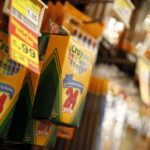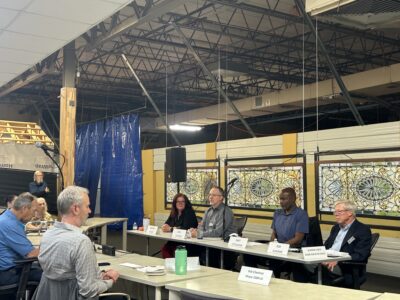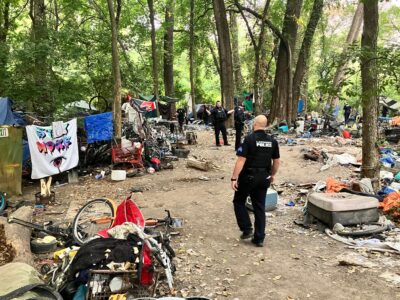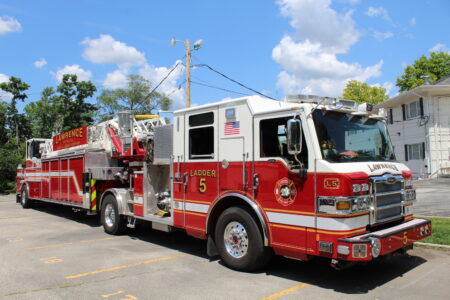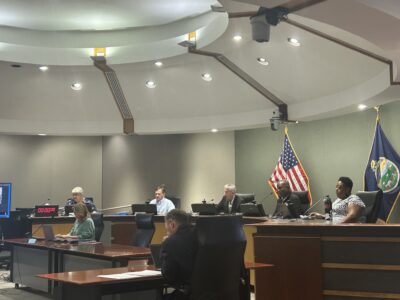To be greener and help the city save more green, official reminds Lawrence residents what items can go in recycling bins

photo by: Nick Krug
Workers sort through recycling materials on a conveyor belt as they are sent through a complex sorting machine on Wednesday, Feb. 17, 2016 at the Hamm's Recycling Facility, 26195 Linwood Road.
To be greener and help the city save a little green, a City of Lawrence official is asking residents to “recycle right” by making sure their recyclables are prepared properly and not contaminated.
A recent audit of Lawrence’s recycling done by the city’s recycling processor, Hamm, found the “contamination rate” of the recycling collected was more than 16%. That’s the percentage of materials that couldn’t be recycled because they were either improperly prepared or not recyclable in the first place.
Mike Lawless, the deputy director for Lawrence’s Municipal and Services Operations department, told the Journal-World that the city has two audits each year — one in the spring, one in the fall — to get a general idea of what is in the nearly 5,000 tons of recycling the city sends to the processor each year. These audits are important because the city can get a rebate based on what types of materials are recycled, since different materials like glass and aluminum have different sale prices.
This past audit of nearly 18.8 tons of material found that 16.2% was contaminated — an improvement from the last audit when the rate was 17%, but still costly. Lawless said if the audit finds less than 10% of materials are contaminated, the city does not have to pay a surcharge for processing the recycling. But if the rate is about 10%, the city pays a $7.50 surcharge per ton, and if the rate is above 15%, the surcharge is $15 per ton.
Some of the non-recyclable items found in Lawrence’s recycling from the last audit include concrete blocks, scrap metal and vapes. Other items that could be recycled elsewhere but not through the city’s recycling system include plastic bags and old electronics.
Some materials can be recycled through the city’s system, but there are extra steps that have to be taken. Lawless said one example is TV boxes. He said he has seen people put the big boxes into the bins along with the Styrofoam or plastic film that protected the box. But the inclusion of those materials prevents the box from being recyclable.
“You can’t recycle the Styrofoam or plastic film; all (you) can recycle is the box,” Lawless said. “But if you put the material in the box, that becomes contaminated trash.”
Lawless said he understands it would be unlikely to have the contamination rate be a perfect zero, but there are steps that Lawrence residents can take to make sure materials can be fully recycled. Rinsing and emptying old aluminum cans or plastic water bottles makes sure they won’t cause contamination. Lawless also suggests flattening cardboard boxes and not throwing any extra materials in between those.

photo by: City of Lawrence
An infographic from the City of Lawrence listing what materials are and are not recyclable through its blue bins.
On a broader level, Lawless said the city has tried to provide more information to people about what materials can go in the blue bins. He said the city sent out magnets that provided examples of what can and can’t go in the recycling to all residential households. Lawless also said those similar signs were placed at apartment complexes around KU so students are aware of what is acceptable and to encourage them to recycle. The city also has a recyclable materials directory on its website that can help direct residents on where they can recycle anything from old tires to bubble wrap.
A city press release noted that the city hopes to get the contamination rate down to 12% during the next audit. Lawless hopes more awareness about the economic impacts of potential contamination and Lawrence’s environmentally conscious character can lead to improved outcomes and ensure that fewer things that could have been recycled go to waste.
“We want more people to recycle (better) so less goes to the landfill,” Lawless said.


